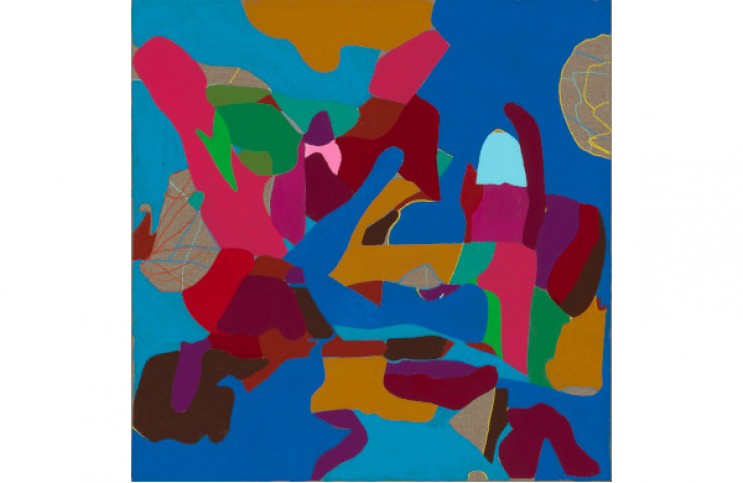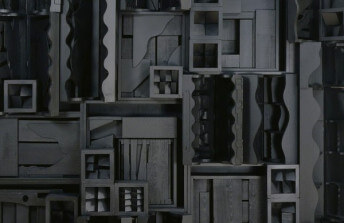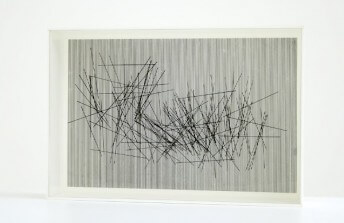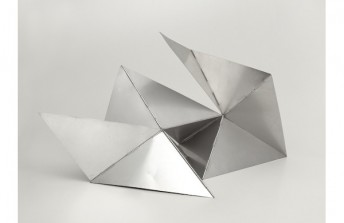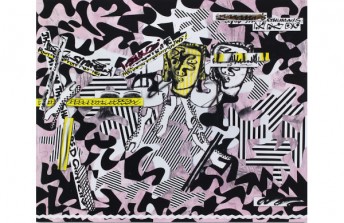Ten Latinx Abstract Artists To Know Right Now
Feb 3, 2021
Reflecting the cultural diversity of its surroundings has been central to the mission of BRIC (formerly Brooklyn Information & Culture) since it was founded in 1979. Their latest exhibition, Latinx Abstract, upholds that mission by bringing much needed attention to an issue that continually dogs not only Latinx artists, but also artists of many different backgrounds: the expectation that their race, ethnicity, gender, or other cultural identifiers must be overtly addressed in their art. For Latinx Abstract, Curator Elizabeth Ferrer not only brought together a lovely, cross-generational survey of contemporary Latinx abstract art; she also achieved the difficult task of assembling work by artists who are simultaneously under-exposed and also mature enough to support a major institutional survey (not an easy thing to do). Exhibitions like this inherently invite criticism: no survey of LatinX abstract artists could ever be complete. That is just one reason I love this show: the concept is brave. If you wait to amend history until you can include everyone and everything, change will never happen. The curatorial focus of Latinx Abstract also brings up another inherently tough question: how can an institutional exhibition free marginalized artists from being defined and oppressed by the need to perform to their cultural identity if it also uses that cultural identity as the curatorial conceit of the show? The wall didactics in the exhibition make it clear that Ferrer realizes representation and identification are complicated, but rooted in empathy. The exhibition succeeds because of the space it creates (literally and metaphorically) in which the colonial, patriarchal powers that have shaped abstract art history can be discussed—a space, as Wilfredo Lam said, “to disturb the dreams of the exploiters.” Here is a deeper look at the ten Latinx abstract artists featured in the show.
Candida Alvarez
Born in Brooklyn in 1955 to parents who moved there from Puerto Rico, Candida Alvarez has developed a distinctive visual language that seems to hover between biomorphic abstraction and arial landscape painting. Her compositions trick the eye, as if alternate between depth and total flatness. Notions of femininity and masculinity are challenged as the compositions alternately seem to reference both wartime camouflage and quilting.
Karlos Cárcamo
Born in 1967 in San Salvador, El Salvador, Karlos Cárcamo was raised in the neighborhood of Jamaica, Queens, New York. His practice includes both sculpture and painting, but his paintings are the part of his practice most firmly rooted in contemporary abstraction. His two most prominent series are his Kase paintings, which are painterly, nearly monochromatic works, and his Hard Edge series, which layer solid colored rectangles over gestural, spray painted markings. Both of these series toy with the ubiquitous aesthetic of urban graffiti removal, and graffiti remover is a common medium in his work.

Karlos Cárcamo - Kase Painting (P6) - 2019. Latex, spray paint, graffiti remover, collage on canvas in reclaimed plywood frame. 28” x 24”.
Maria Chavez
Born in Lima, Peru, Maria Chavez is a sound and installation artist. She uses turntables, sometimes broken, to create sonic experiences that rely on the distinctive architecture of a particular place for their character, blending notions of site specificity with issues related to sound and space.
Alejandro Guzman
Puerto Rican born artist Alejandro Guzman creates haunting, totemic sculptures that hover between total abstraction and anthropomorphic creature-hood. His material language borrows from indigenous culture and mass consumerist society, creating a range of references for viewers that suggest a post-colonial cultural totality in the process of becoming.
Glendalys Medina
Born in Puerto Rico and raised in the Bronx, New York, Glendalys Medina blends patterns inspired by everything from near technology to geometry to hip hop and self help, creating abstracted images and sculptures that challenge viewers to question their existing concepts of recognition. Her work is essentially about creating frameworks for personal disruption, as it calls on viewers to escape their programming and aspire towards an individualistic perspective.
Freddy Rodriguez
Born in Santiago de los Caballeros, Dominican Republic in 1945, Freddy Rodriguez studied art in New York at a time when Geometric Abstraction and Minimalism were brushing up against Abstract Expressionism and Pop Art. Rodrigues absorbed all of these influences, and has continually, fearlessly experimented with them, pushing to find new ways of expressing his personal heritage and point of view. He has escaped being defined by a particular style, instead bending various aesthetic approaches to express his own distinctive perspective.

Freddy Rodriguez - Ella sola, 1974. Acrylic on canvas. 64 x 36 in. Courtesy Hutchinson Modern & Contemporary
Fanny Sanín
Born in 1938 in Bogotá, Colombian, Fanny Sanín studied art in three different countries, earning her degree from the University of Los Andes in Bogotá before studying printmaking at the University of Illinois, and then engraving at Chelsea School of Art in London. Her striking geometric studies and paintings bring an architectonic structure together with an almost spiritualist sense of color and balance. Her paintings deploy bursts of color in ways that make them seem to radiate light.
Mary Valverde
Using a blend of everyday materials like yarn, paper and tape, and culturally charged materials like coffee and cocoa, Mary Valverde creates paintings, sculptures and installations that evoke a sense of spiritualism and sacred geometry. Her installations suggest a sort of functional religious character, but the work remains abstract. This presents a challenge to viewers who are forced to reckon with their own pre-associations, which emanate from their relationships with both the materials and the architecture.
Vargas-Suarez Universal
Born in Mexico City in 1972, Vargas-Suarez Universal creates murals, paintings and textiles that blend the visual languages of ancient indigenous crafts and contemporary micro technology. The forms and shapes in his work inhabit a liminal space between meaning-packed symbolism and pure decoration. His compositions deploy the forms and patterns in unexpected and off-kilter ways, suggesting ominous, unknown plans are at work.
Sarah Zapata
As an “American of Peruvian heritage, a lesbian raised in a Christian Evangelical household, and a Texan based in Brooklyn,” Sarah Zapata lives a life steeped in expectations about various types of identity. Her work blends the visual languages of Modernist abstraction with various culturally loaded materials and processes in ways that undermine social stigmas and subvert traditional viewpoints. The textiles she employs in her practice give her work a sense of being simultaneously synthetically dead and naturally alive.
Featured image: Candida Alvarez - Vision Painting No.15, 2020. Acrylic on linen. 20 x 20. Courtesy of the artist and Monique Meloche Gallery, Chicago.
All images used for illustrative purposes only
By Phillip Barcio
